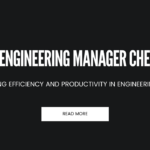Big tech companies like Amazon and Meta often ask questions like “making short-term sacrifices for long-term gains” to assess candidates’ fit with their Leadership Principles. These companies have a rigorous interview process that focuses on technical skills, behavioural competencies, and cultural fit. Understanding and demonstrating these competencies is critical to succeeding in their interviews.
💬 Community Guidelines
- Stay on topic. Use the comment section to submit solutions and provide feedback to others.
- Be inclusive. EngineeringBolt is a diverse community. Please respect others’ opinions and beliefs.
Answering Interview Question
When answering the question, “Tell me about a time you had to decide to make short-term sacrifices for long-term gains,” it’s crucial to not only demonstrate your ability to think strategically and make decisions that align with overarching business goals but also to emphasize the significant role you played in these decisions. Highlight your problem-solving skills, decision-making process, and the long-term vision you aimed to achieve. Show how you managed stakeholders, communicated the benefits, and executed the plan effectively. Specific examples showcasing your leadership, customer obsession, and alignment with core principles will illustrate your ability to navigate complex situations for sustainable success.
Focus Areas
Problem-Solving Skills
- Understanding of the Problem: Did the candidate articulate the problem or challenge that necessitated the decision?
- Context and Complexity: How complex was the situation? Did the candidate explain the context and constraints effectively?
Decision-Making Process
- Analytical Approach: Did the candidate demonstrate a systematic approach to analyzing the situation and weighing the short-term sacrifices against the long-term benefits?
- Criteria for Decision: What factors did the candidate consider necessary in making the decision? Were these factors relevant and aligned with the company’s goals or the project’s objectives?
Strategic Thinking
- Long-Term Vision: How well did the candidate articulate the long-term gains? Did they show a clear understanding of the potential future benefits?
- Alignment with Business Goals: Did the candidate align their decision with broader business goals or strategic objectives?
Leadership and Influence
- Stakeholder Management: How did the candidate manage the stakeholders involved? Did they communicate the short-term sacrifices and long-term benefits effectively to their team or other stakeholders?
- Influence and Persuasion: Did the candidate have to persuade others to agree with their decision? How did they handle any resistance?
Execution and Follow-Through
- Implementation: How did the candidate implement the decision? What steps did they take to mitigate the impact of the short-term sacrifices?
- Outcome and Reflection: What was the result of the decision? Did the long-term gains materialize as expected? What did the candidate learn from the experience?
Examples of Short-Term Sacrifices
- Resource Allocation: Did the candidate mention reallocating resources, such as time, budget, or personnel, from immediate tasks to more strategic initiatives?
- Feature Prioritization: Did they delay the release of features or products in favour of more sustainable solutions or foundational improvements?
- Technical Debt: Did the candidate address technical debt by prioritizing long-term code quality and maintainability over quick fixes?
Behavioural Competencies
- Bias for Action: Did the candidate demonstrate a bias for action, showing they are fearless in making tough decisions quickly when necessary?
- Customer Obsession: Was there an element of customer obsession in their decision, considering the long-term benefits to the end-user?
- Ownership: Did the candidate take ownership of the decision and its good and bad consequences?
Cultural Fit
- Amazon Leadership Principles: How well did the candidate’s approach align with Amazon’s leadership principles, such as “Think Big,” “Dive Deep,” “Have Backbone; Disagree and Commit,” and “Deliver Results”?
Example Strong Answer

Strategic Context:
Company Mission: Instant Book’s mission is to be the 10x better sales generator for SMB service providers, offering more jobs, fewer cancellations, and saving time.
Team Mission: My team’s mission is to help service providers efficiently and correctly set up their book-a-service flow.
Situation / What the Change Is:
A few months into my role, I gathered insights from launch reviews and various interviews to understand the state of our business and product areas. Through qualitative data from supplier feedback and quantitative data showing that only 10% of our service providers had adopted Instant Book, I realized we needed to validate if this 10% represented the mainstream provider needs. This experiment was crucial to determining the validity of our long-term product roadmap.
Why It’s Important:
The risk was that if this 10% was not representative of the mainstream, we would make decisions based on an extreme group, leading to low impact and missed opportunities. I proposed an auto-enrollment experiment for service providers to validate or invalidate our must-have product gaps. Without this, we risked building towards an extreme user base, yielding low ROI, and failing to capture a critical market opportunity, ultimately jeopardizing our mission.
Action / Style:
I immediately communicated the new direction in a concise update on Slack to spark initial thoughts and actions. I followed up with a detailed product brief to align stakeholders, foster diverse thinking, and assess the potential impact. This collaborative approach helped co-create a robust plan with fewer blind spots. I incorporated feedback, clearly articulated the rationale behind the proposal, and drove consensus. I formally communicated the changes through a meeting and documented everything in a Change Management Log. For my team, I simplified the action plan using a “keep doing, start doing, stop doing” framework to ensure clarity and prompt execution.
Deliver Results:
I orchestrated the efforts of three product teams, uniting them to deliver the experiment within six weeks. We met our success metric, achieving 100% acceptance of bookings by service providers in the experiment market. The findings enabled us to eliminate unnecessary features and focus on essentials. This significantly accelerated our mission to improve the booking process.
Learnings & Growth:
Customers/Users: I learned that early adopters often differ significantly from mainstream customers, emphasizing the need to recruit and learn from a broader audience.
PMing Skills: I reinforced the importance of articulating the risks of inaction to stakeholders to drive alignment. I also honed my ability to use internal and external factors to foster ownership and accountability.
Challenges:
Influencing Beyond Control: When dealing with stakeholders outside my immediate influence, I leveraged relationships through my manager and skip-level manager to gain alignment and expedite progress.
Engineering Resource Management: To mitigate the risk of creating throwaway work for engineering, I focused on repurposing efforts and demonstrating how progress on this initiative could prevent more wasted work in the future.
Conclusion
Mastering the art of making short-term sacrifices for long-term gains is not just a skill but a mindset that is crucial for any successful software engineer, especially in a dynamic and fast-paced environment like Amazon.
When answering questions about such decisions, it’s essential to highlight your strategic thinking, data-driven approach, and ability to align with broader company goals. Demonstrating how you effectively communicate, collaborate, and lead through change showcases your leadership potential and cultural fit.
By focusing on these areas, you convey your capacity to navigate complex challenges, drive sustainable success and inspire confidence in your potential for continuous growth and learning, making a compelling case for your candidacy.


